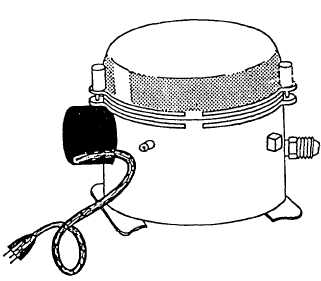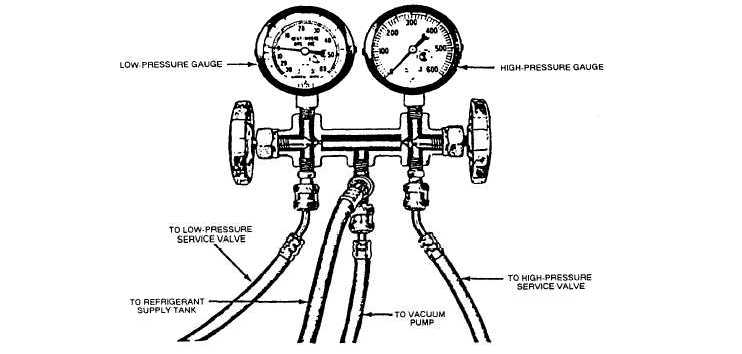
Figure 13-19. - Typical vacuum pump.
3. Reduce the flame when the reaction plate is red, and adjust the top of the flame even with, or slightly above, the reaction plate (just high enough to maintain the cherry-red color).
CAUTION
Too high a flame will soon burn out the reactor plate.
4. Move the search hose slowly around the system. Refrigerant R-12 is heavier than air, so move the search hose under all parts to ensure accurate detection and watch for the flame to change color. A pale blue color is normal and indicates that there is no refrigerant leak. Yellow or yellow-green indicates a small leak, purplish blue indicates a larger leak.
If you do not find a leak, increase the system charge by 50 percent. Add 1 pound to a 2-pound system; and 2 pounds to a 4-pound system. Repeat the detection check. It is often necessary for you to overcharge a system to locate a small or intermittent leak. If you find a leak discharge the refrigerant from the system, repair the damage, and recharge the system. Finally, recheck the system after completing repairs.
When searching for leaks in an air-conditioning system, you are looking very closely at all working parts. Do not waste this time. Check for cracked or worn hoses, loose electrical connections, broken wires, worn drive belts, and loose component mounts. When you detect any damage, make the needed repairs at the same time as the inspection.
PURGING THE AIR-CONDITIONING SYSTEM
Anytime an air-conditioning system is discharged and opened before it is returned to service, it must be evacuated and recharged. To perform this operation, you need certain tools, such as a vacuum pump (fig. 13-19), a gauge manifold set (fig. 13-20), and a leak detector.

Figure 13-20. - Gauge manifold set.
Continue Reading